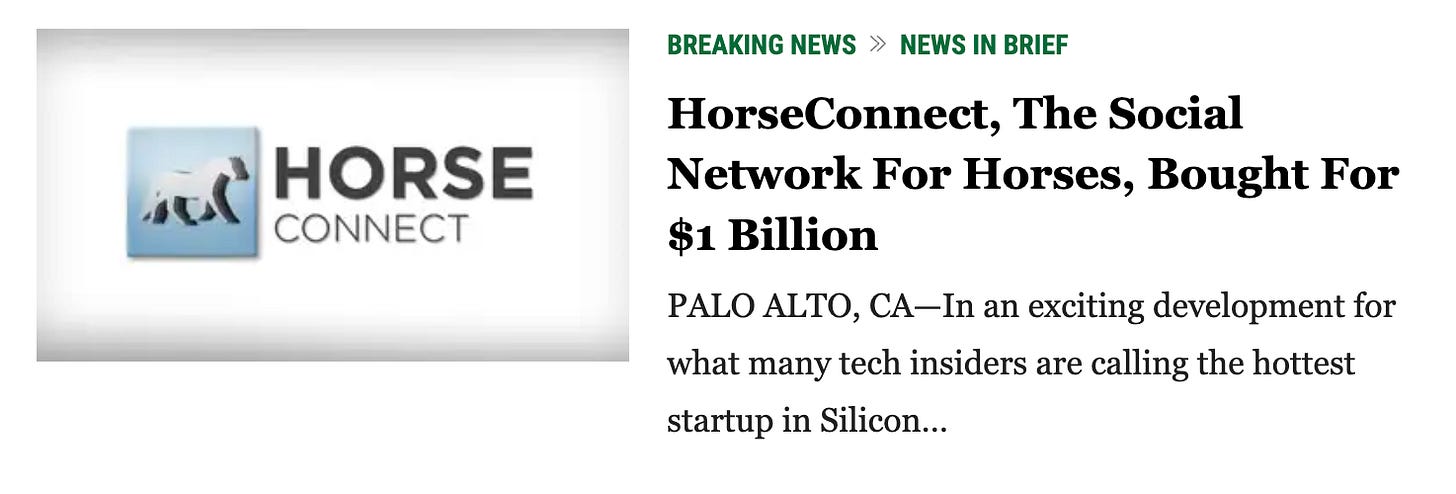In my last post I made the case for standing up the Product function early. But what’s the cost of failing to do so? The answer depends on the stage of the company. As a founder I need to know what I’m trading off when considering a product hire. As a series A or B company I may have the traction to justify not investing in the function. And as a leader of a scaled company I may not know what to look for when evaluating the Product organization.
Alexis Ohanian expressed one opinion in a recent tweet:
This same statement can be adapted for companies at other stages, too. Let’s look at some examples.
Early Stage
Let’s define “early” as any company that has yet to reach product-market fit. The company may have a handful of users, some regular usage, but lacks user stickiness, revenue growth, or a proven product thesis.
For early companies, finding product-market fit means providing value our customers will pay for before we run out of money. This is possible if we’re able to learn, operationalize our learnings, and improve our offering within the time available. The more product learnings we successfully operationalize per unit time, the better our chances of success.
Without the product function at this stage…
We do not understand the impact of product changes. Early startups frequently get things wrong. That’s fine as long as we learn from our failures but difficult without the product function. Product’s role is to form measurable, falsifiable hypotheses and draw insights from everything we build. Doing so ensures we trend towards our intended impact as we learn what works and what doesn’t. It’s this build-measure-learn loop that’s at the center of lean startup methodology, but startups without the Product function often skip the learn phase altogether in favor of building more stuff. Which leads us to our next risk…
We build things without proper validation. We can build anything. Software is cool like that. The role of product is to make sure we don’t. Early teams must maximize the leverage of their efforts, an impossible task if we skip discovery and validation phases to building a thing we then have to support. The Product role is responsible for justifying builds based on existing signal, user testing, or by slimming down efforts into spikes and simple testable MVPs. The default for any solid Product leader should be not to build something. Without the Product function there is no pressure to prove a need for a new feature, teams lose focus, build whatever they can justify, and (next risk, please)…
We waste time. For VC funded startups, time is literally money. And time is the primary cost of building things we don’t need, especially if we cannot learn from those efforts. Product leaders are trained in finding efficiencies throughout the process, ensuring we build the right thing (validation of new ideas, collection of insights, facilitating design and engineering planning) and build the thing right (developing testable hypotheses, prioritizing value and effort, sequencing efforts into testable chunks). Without the product function we risk wasting the most precious resource we have: engineering time. The cost of building product we don’t need compounds over time, too: every new feature reduces introduces additional complexity to finding signal in the noise, confusing users and internal-decision makers alike.
Growth Stage
For our purposes, growth stage companies are those that have reached product-market fit, are steadily acquiring new customers on their first product in market. Revenue is growing and so are costs. Unit economics are in focus as teams are hired to increase the value of the product to a broader audience and retain these users for longer.
This is often an “oh shit” moment for companies without a well-defined Product function. We’re growing but we don’t know why. The ambiguity leads to frequent shifts in product direction. We see teams asking for clarity and spinning their wheels. I was once the first Product hire onto a team of 95. Somehow there were 20+ team leads, all with different visions, all of whom believed theirs was the “real” product vision. Success at this stage requires a company to scale its offering to a broader audience while maintaining a consistent product vision.
Without the product function at this stage…
We make bad hires. Growing teams hire against the future need for capacity in engineering/design/marketing/etc. While leaders may ask us to build x thing in y weeks, it’s the role of Product (and the main utility of a product roadmap) to frame the conversation of what can be delivered and in what order. Leaders are then empowered to probe, negotiate, and plan around capacity realities. Without the anchoring of a well constructed roadmap, leaders are left to guess how many new heads are needed to reach our goals. And because over-hiring is perceived as higher risk than under-hiring...
We take on unnecessary debt. Fun fact: it takes time to build things the right way. The Product function is tasked with communicating timeline realities and negotiating with stakeholders to ensure the expected value is delivered in the expected timeframe. Product manages these expectations and revises scope, timeline, and deliverables accordingly. Without this oversight, teams become over-committed as timelines and deadlines get out of sync. We take on tech debt as we rush to ship. Design and product debt accumulate as we move from MVP to MVP, failing to iterate on our work and missing our intended value delivery in the process. The result is a very “greebly” product with many features in various states of completion and design, few of which function the way users expect. When facing this much debt we’re constantly stuck reacting to the customer pain that comes with using a disjointed product. Conversations center on the need to rethink and redesign our product, eating up bandwidth, and as a result…
We fail to innovate. Picture your Eisenhower matrix. In the “important, not urgent” quadrant are all the new product lines you raised your last round on, listed in a pretty GANTT as 1-3 years out from closing the round. Two years pass and you’ve doubled your team size but made no progress on these new product bets. A Product leader’s job is to dedicate time and attention to these long-term efforts in proportion to the expected value, confidence, and timeline. With product debt under control and a roadmap that prioritizes the long-term work, the team can plan and begin to execute. Without the visibility and the organizational focus afforded by a steady Product hand, new ideas will stay pipe dreams and…
We work on the wrong stuff. Prioritization without product thinking is a wicked problem. At this point your team is working against arbitrary deadlines on a product that is not providing its intended value. There are landmines in code and product positioning waiting to be detonated. We take the medium-value/low-effort path when picking new features to avoid the danger of reworking old features thus creating an even more disjointed experience. We look back at our work and wonder how we can continue working without a full rethink of our direction. The product is being used by several different customer segments, all with different use cases. By prioritizing one user type we cause pain in another. Teams advocate for their view of what comes next. Naturally, there are contradictory views. Decision-making becomes a drawn-out process. We’re stuck in the mud.
Scaled Products
Believe it or not, there are large, outwardly successful Product-oriented companies that lack strong Product organizations internally. While rarely without a role called “Product Manager,” these orgs treat product more as performance art or project management than as the true business strategy role it is intended to be. Rather than point out the different risks of companies at this stage, I want to highlight two cases that can put a company in this situation.
Early Acquisition. Some startups experience such strong tailwinds that for a time they appear to grow continuously. Many do so by early acquisition into a larger portfolio that supercharges user acquisition or provides a vital function for free. While some of these successes are eventually folded into the parent, some remain separate and appear invulnerable. These companies see positive signal from every action they take, not because it’s actually there but because they’re measuring the wrong things. They hire Product managers who can continue the gravy train, building new features that eke out incremental gains. Innovation is viewed with skepticism by leadership; why invest in high risk endeavors when we’re continuing to grow? Product leaders who recognize the need for cohesive strategy and planning leave the company for greener pastures. The org is left with detail-oriented, project-manager-y Product folk who are sufficiently stimulated by the feature-factory approach to Product management. Inevitably the wind changes, and lacking a long-term plan the org risks falling apart.
Frothy Growth. The economy of the last decade is over. Companies that managed to scale during the boom of the 2010s are faced with reality. Unfortunately, many product managers spent these years chasing local rather than global maxima. The result has been the stunning collapse of many industry darlings as the pressure to grow revenue and reduce operating costs increased. While we can’t blame Product for the collapse of the economy (…right? someone back me up here), it is a common enough phenomena that it’s worth mentioning. The role of the product person is to deliver value that ultimately increases revenue. Most of us love building “cool stuff” and working on new features, but the function is and always has been one of business strategy. Companies that forget this are unlikely to last. Just ask the subscription box companies and meal delivery aggregators.
Final Thoughts
The scariest part is that most of these effects are not noticed until it’s too late. While many leaders have the x-ray vision required to see the problem before it becomes critical, others end up simply treating the symptoms. Once the problem is recognized, growth and scaled orgs may find the organizational momentum to make a change (I’ve been lucky enough to be part of a couple). For earlier stage companies experiencing the thrash of poor product-market fit, however, there’s less time to spend on a reorg or long hiring process. In that situation you’re better off finding a fractional product leader or a consultant to add the bandwidth without losing momentum.
Yes, that’s a shameless plug, but I do what I do because I believe it’s the best way to build a company. Email me at me@samgimbel.com and we can find out together.
Sam Gimbel is a former co-founder of Clark (acquired 2019) and VP of Product at Clover. He consults with startups to take the risk out of creating a sustainable product function within their organizations.







